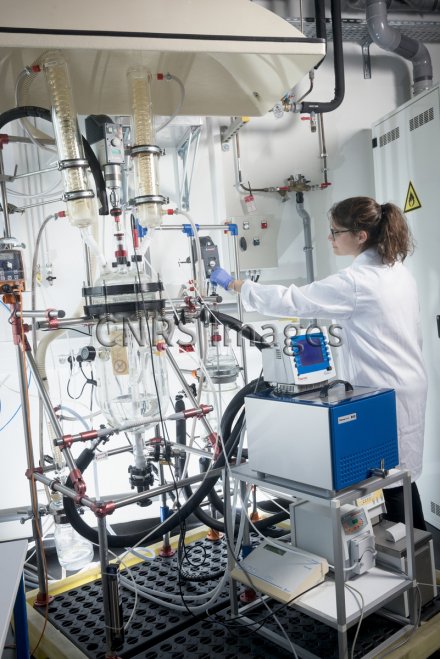Production year
2017

© Jean-Claude MOSCHETTI / IRCER / CNRS Images
20170068_0052
Synthesis of calcium phosphate for the manufacture of bioceramics with an apatite structure, analogous to bone mineral. These ceramics, more specifically in this case hydroxyapatite, are used to manufacture bone substitutes for bone tissue engineering. The main reactor contains calcium nitrate, to which is added, at a controlled temperature and pH, ammonium phosphate. This synthesis using soft chemistry makes it possible to obtain a calcium phosphate precipitate whose composition depends on the synthesis conditions (type of reagents, temperature and pH of the reaction environment, maturing time, etc.). After drying, the powder obtained can be shaped via various ceramic processes: stereolithography, microstereolithography, foam impregnation, microextrusion, etc.
The use of media visible on the CNRS Images Platform can be granted on request. Any reproduction or representation is forbidden without prior authorization from CNRS Images (except for resources under Creative Commons license).
No modification of an image may be made without the prior consent of CNRS Images.
No use of an image for advertising purposes or distribution to a third party may be made without the prior agreement of CNRS Images.
For more information, please consult our general conditions
2017
Our work is guided by the way scientists question the world around them and we translate their research into images to help people to understand the world better and to awaken their curiosity and wonderment.